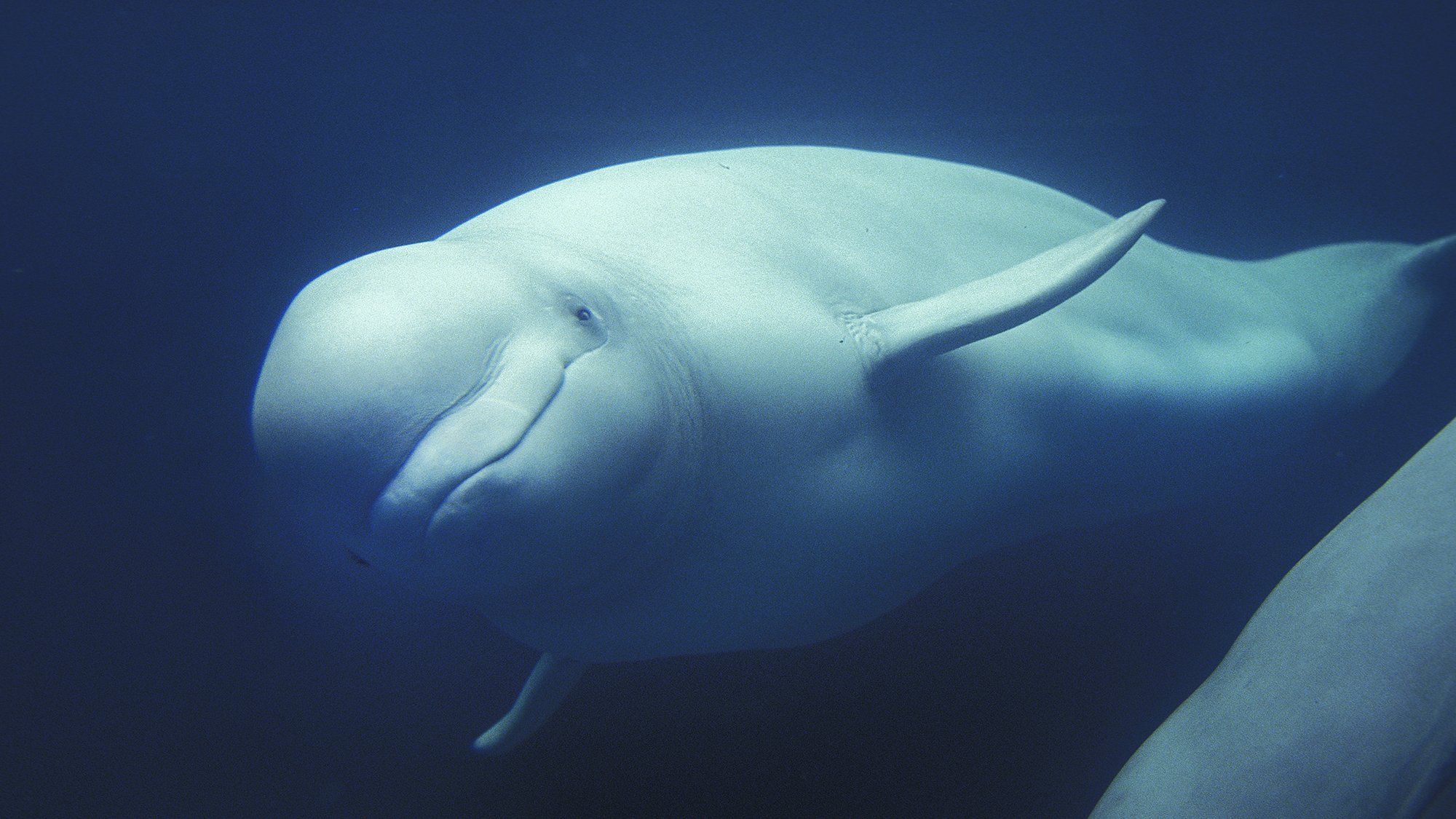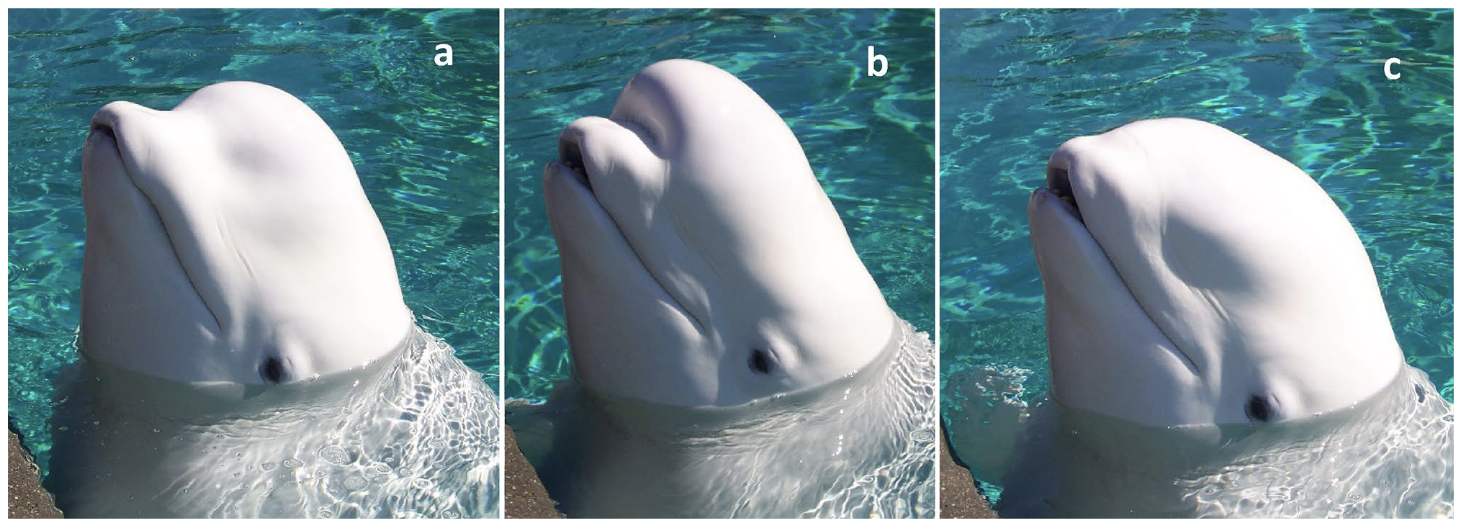
Animals have evolved all sorts of weird and wonderful methods of communication—everything from mantis shrimp bouncing pulses of polarized light to one another to birds-of-paradise gallivanting around the jungle to demonstrate their virility. Even so, there may well only be one animal that can claim to have a highly developed variety of expression that’s communicated entirely via a blob of fat on its forehead. Step forward—or, perhaps, swim forward—the beluga.
Like all other toothed whales, these little Arctic-dwelling cetaceans have an organ on their foreheads that’s referred to as the melon. The melon has long been a source of fascination to scientists, who’ve proposed a variety of outlandish theories over the years to explain its presence. (The consensus today is that it’s used for sound generation and to assist in echolocation.)
In the beluga, however, the melon also seems to have another use. Belugas’ melons are strikingly large and, uniquely, they are also malleable, because belugas have facial muscles that can pull and push on the melon. Doing this essentially allows the animal to change the shape of its head. But why do belugas do this?
As ScienceNews reports, a March Animal Cognition study of four captive belugas in a Connecticut aquarium set out to categorize the different shapes the melon can take, and then trying to deduce those shapes’ meanings. The study’s authors analyzed a year’s worth of video footage of the belugas, and then compared their findings to observations of another, larger population of 51 belugas at an aquarium in Canada.
They found that while the melon can take any number of subtly different shapes, these all fall into five distinct categories—and they suggest that these shapes essentially constitute a form of visual communication unique to belugas.

It is commonly known that the motivation behind many of a given animal’s actions come down to feeding and/or mating. And unsurprisingly, at least two of the melon shapes seem related to the latter—or as the study authors put it, they are “primarily performed by males toward a female recipient in conjunction with courtship behavior.” (These shapes also occur during what the authors call “male-male sociosexual play,” a behavior that occurs in various cetaceans. One study of killer whales describes it as “young males … practic[ing] courtship behaviors by engaging in sociosexual play with other males”; in this context “sociosexual” refers to behavior that is sexual but does not involve conception.) The three remaining shapes are harder to parse, although one common thread is that all are carried out more often by males: “Males performed shapes more than three times as frequently… as females.”
There are important caveats here: studies of melon-based communication have so far been limited to belugas in captivity, and it’s certainly not out of the question that an intelligent, highly sociable animal might communicate differently in an aquarium than in the wild. The study also suggests that more research is needed into the interaction between the melon’s echolocatory and visual functions, not least because the video footage used for analysis lacked audio: “[Shapes] could serve both functions, [and] the lack of acoustic recordings during this study precludes these determinations… Simultaneous acoustic recordings and video observations in all lighting conditions are needed to resolve this question for the function of beluga melon shapes.”
Nevertheless, the study goes some way toward explaining one of the animal kingdom’s most unusual behaviors.
The post Belugas may be jiggling their melons to communicate appeared first on Popular Science.
Articles may contain affiliate links which enable us to share in the revenue of any purchases made.
from Popular Science https://ift.tt/cZGTu5v




0 Comments